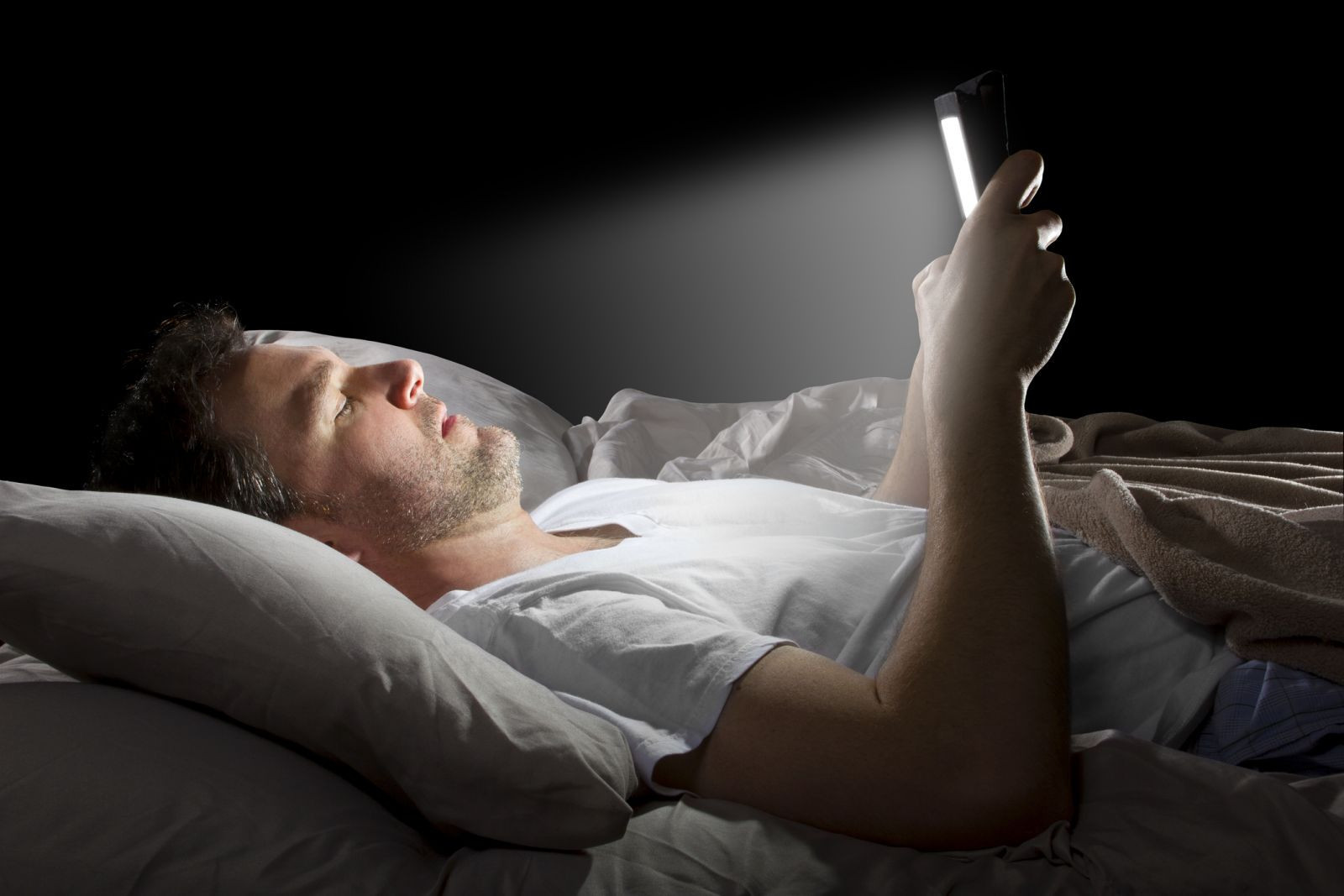What is blue light? The effect blue light has on your sleep and more.
Although it is environmentally friendly, blue light can affect your sleep and potentially cause disease. Until the advent of artificial lighting, the sun was the major source of lighting, and people spent their evenings in (relative) darkness. Now, in much of the world, evenings are illuminated, and we take our easy access to all those lumens pretty much for granted.
But we may be paying a price for basking in all that light. At night, light throws the body's biological clock—the circadian rhythm—out of whack. Sleep suffers. Worse, research shows that it may contribute to the causation of cancer, diabetes, heart disease, and obesity.

What is blue light?
Not all colors of light have the same effect. Blue wavelengths—which are beneficial during daylight hours because they boost attention, reaction times, and mood—seem to be the most disruptive at night. And the proliferation of electronics with screens, as well as energy-efficient lighting, is increasing our exposure to blue wavelengths, especially after sundown.
Light and sleep
Everyone has slightly different circadian rhythms, but the average length is 24 and one-quarter hours. The circadian rhythm of people who stay up late is slightly longer, while the rhythms of earlier birds fall short of 24 hours. Dr. Charles Czeisler of Harvard Medical School showed, in 1981, that daylight keeps a person's internal clock aligned with the environment.
Is nighttime light exposure bad?
Some studies suggest a link between exposure to light at night, such as working the night shift, to diabetes, heart disease, and obesity. That's not proof that nighttime light exposure causes these conditions; nor is it clear why it could be bad for us.
Exposure to light suppresses the secretion of melatonin, a hormone that influences circadian rhythms. Even dim light can interfere with a person's circadian rhythm and melatonin secretion. A mere eight lux—a level of brightness exceeded by most table lamps and about twice that of a night light—has an effect. Light at night is part of the reason so many people don't get enough sleep, and researchers have linked short sleep to increased risk for depression, as well as diabetes and cardiovascular problems.
Effects of blue light and sleep
While light of any kind can suppress the secretion of melatonin, blue light at night does so more powerfully. Harvard researchers and their colleagues conducted an experiment comparing the effects of 6.5 hours of exposure to blue light to exposure to green light of comparable brightness. The blue light suppressed melatonin for about twice as long as the green light and shifted circadian rhythms by twice as much (3 hours vs. 1.5 hours).
In another study of blue light, researchers at the University of Toronto compared the melatonin levels of people exposed to bright indoor light who were wearing blue-light–blocking goggles to people exposed to regular dim light without wearing goggles. The fact that the levels of the hormone were about the same in the two groups strengthens the hypothesis that blue light is a potent suppressor of melatonin. It also suggests that shift workers and night owls could perhaps protect themselves if they wore eyewear that blocks blue light. Inexpensive sunglasses with orange-tinted lenses block blue light, but they also block other colors, so they're not suitable for use indoors at night. Glasses that block out only blue light can cost up to $80.
LED blue light exposure
If blue light does have adverse health effects, then environmental concerns, and the quest for energy-efficient lighting, could be at odds with personal health. Those curlicue compact fluorescent lightbulbs and LED lights are much more energy-efficient than the old-fashioned incandescent lightbulbs we grew up with. But they also tend to produce more blue light.
The physics of fluorescent lights can't be changed, but coatings inside the bulbs can be so they produce a warmer, less blue light. LED lights are more efficient than fluorescent lights, but they also produce a fair amount of light in the blue spectrum. Richard Hansler, a light researcher at John Carroll University in Cleveland, notes that ordinary incandescent lights also produce some blue light, although less than most fluorescent lightbulbs.
Protect yourself from blue light at night
-
Use dim red lights for night lights. Red light is less likely to shift circadian rhythm and suppress melatonin.
-
Avoid looking at bright screens beginning two to three hours before bed.
-
If you work a night shift or use a lot of electronic devices at night, consider wearing blue-blocking glasses or installing an app that filters the blue/green wavelength at night.
-
Expose yourself to lots of bright light during the day, which will boost your ability to sleep at night, as well as your mood and alertness during daylight.
TrendForce 2024 Global LED Lighting Market Analysis
Release Date: 01 February 2024 / 31 July 2024
Language: Traditional Chinese / English
Format: PDF and Excel
Page: 90-100 / Semi-Annual
|
If you would like to know more details , please contact:
|












